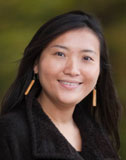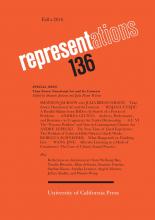The “Peasant Problem” and Time in Contemporary Chinese Art
by Gu Yi
The essay begins:
In the early 2000s, Chinese art critic Gu Chengfeng lamented the absence of peasants in Chinese contemporary art. Having counted works at various large-scale exhibitions in China, including the Chengdu and Shanghai biennials, he bemoaned the fact that less than 2 percent of the exhibits concerned peasants. While it is no surprise that contemporary art is urban in its production, circulation, tropes, and concerns, Chinese critics found this absence highly problematic, as peasants, at that time, still constituted the largest social group in China. Although the Communist Revolution succeeded because the party addressed the peasant problem, the interests and well-being of the peasantry continued to be diminished by other facets of the nation-building endeavor in Mao’s China. Deemed the true owners of the regime by the state ideology, peasants were in fact bound to the region of their birth by the household registration system known as hukou, and they were deprived of the rations, medical care, education, and pensions to which most city dwellers had access. While the post-1976 reform era witnessed the loosening of government control of internal migration, the mingong (migrant workers or peasant workers), whose cheap labor had enabled China’s economic boom, continued to be discriminated against economically, socially, and culturally in the same urban centers whose construction and daily operations depended upon them. This stark inequality pointed to cities as the only destination for the upwardly mobile. At the turn of the twenty-first century, rural economic stagnation and social disintegration became so prominent that these issues were no longer merely topics for public policy. Instead, the peasant problem received widening attention from the cultural sector, including the art world.
The first decade of the millennium indeed witnessed a wave of artistic projects focusing on peasants. Critical discussions of these works have so far focused on the ways of seeing—looking up, looking down, and looking horizontally—that characterize relationships that intellectual and artistic elites have with peasants. A consensus was quickly reached that both the glorification and the debasement of peasants was problematic; “looking horizontally,” the only ethical and constructive approach, was also deemed challenging. Many works on peasants were denounced as little more than confirmations of the moral superiority of the domestic middle class and one more trope for Chinese artists and international collectors hungry for new symbols of “China-made.”
This article intends to rethink the peasant problem in Chinese art through the politics of time, as many works involving peasants are time-based and dependent on durational experience. Moreover, critical discussions of these works also reflect an obsession with artists’ investment of time, which is considered a guarantee of artistic authenticity in the face of over-marketization, both in the contemporary art world and in the globalizing sphere of socialist China. In addition, the temporal structure of art history is greatly contested when peasants and their works enter the contemporary art world. The works involving peasants provide a unique perspective on the problematics of the specific aspirations, concerns, and anxieties of contemporary Chinese art, echoing larger debates about artistic collaboration in time-based art, its hierarchies of labor, and its criteria for moral and aesthetic evaluation. China offers a particularly interesting case, as under bygone eras of socialism, artistic agency was bestowed upon the peasants by the state, even if only in theory. Fascinatingly, that historical precedent complicates contemporary assumptions of the potential of art in a global struggle against neoliberalism, assumptions based in the experience and inquiry of the West. It is to these larger debates on the temporal and regional politics of art that my examination of Chinese artists’ engagement with the “peasant problem” intends to respond. Continue reading …
This essay examines the time-based artworks involving peasants as participants, coworkers, and fellow artists that were created by Chinese artists during the first decade of the millennium. These works bring into relief China’s postsocialist reality and socialist legacy, offering a unique perspective on the politics of time in global contemporary art.
 GU YI is Assistant Professor of Modern and Contemporary Chinese Art at the University of Toronto, Scarborough. She recently finished a book manuscript on the ocular turn in modern Chinese art, and her current research focuses on Cold War visuality and cultural exchanges within the socialist bloc.
GU YI is Assistant Professor of Modern and Contemporary Chinese Art at the University of Toronto, Scarborough. She recently finished a book manuscript on the ocular turn in modern Chinese art, and her current research focuses on Cold War visuality and cultural exchanges within the socialist bloc.

